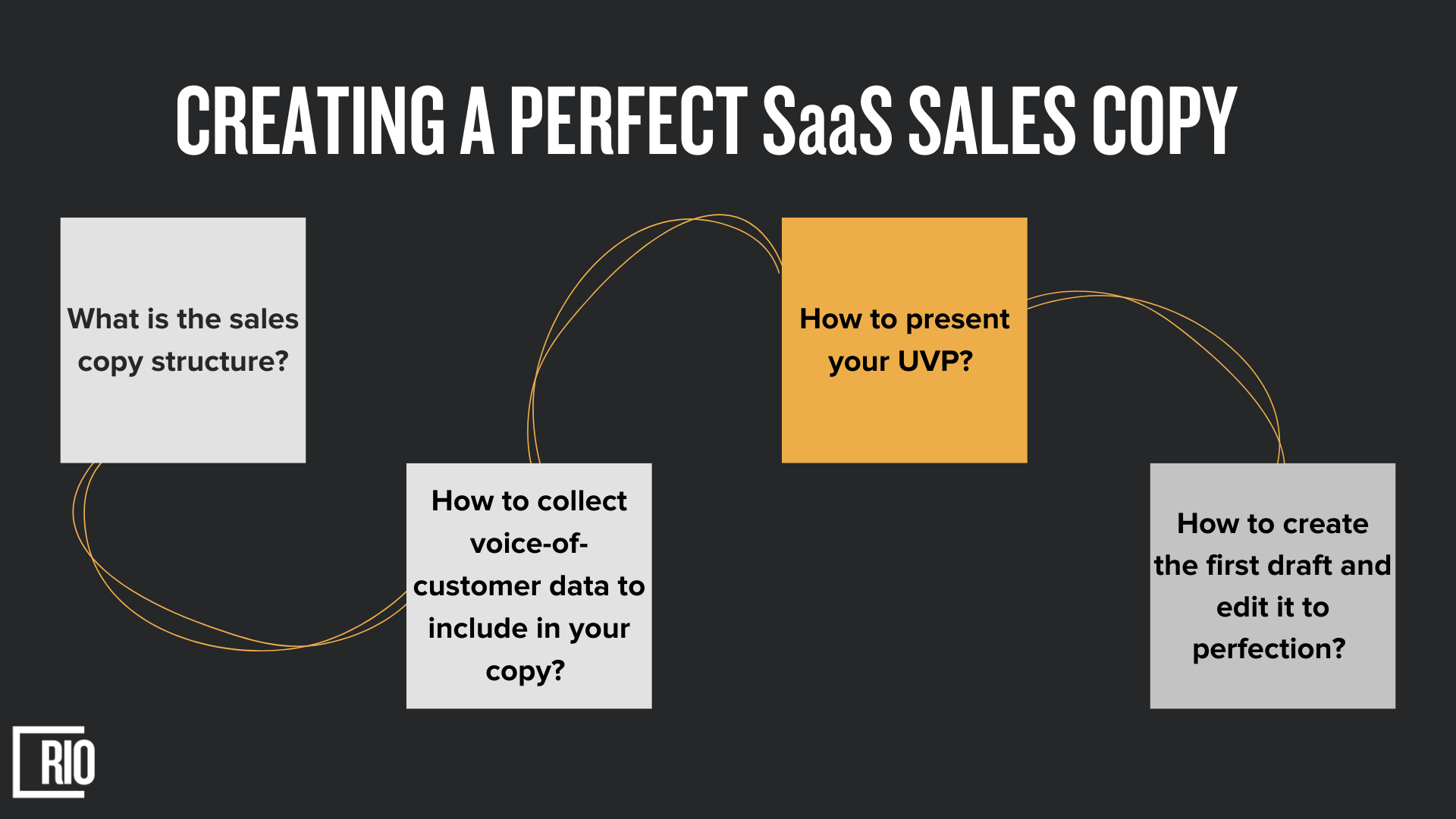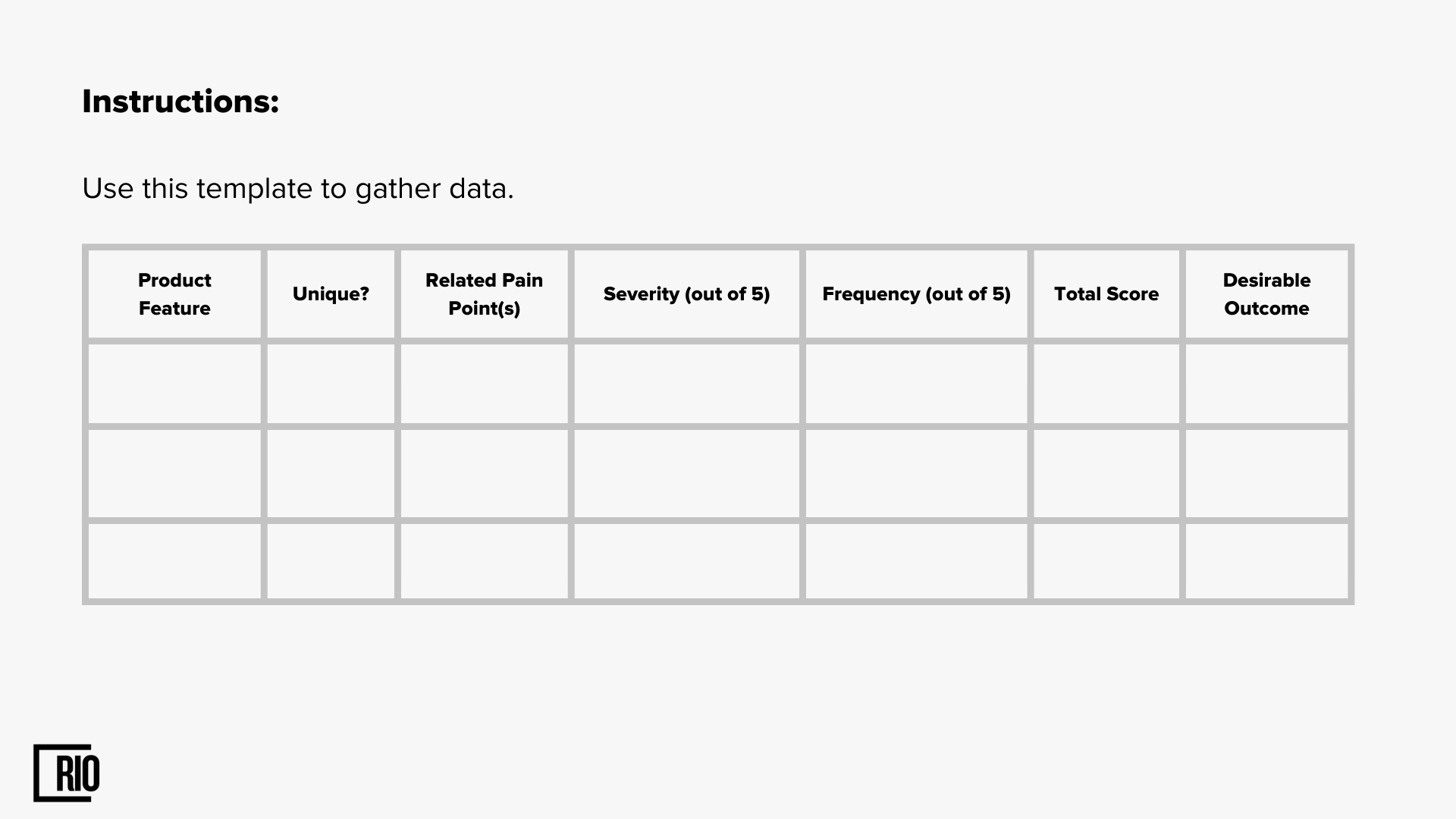This is the third article in the series. Here is a quick overview of the topics covered in each article:

Imagine this situation: your copy seems to be fine and you understand that you got the right idea of prospects' pains but your solution doesn't get responses from prospects and stays ignored.
And what if you're really sure that your solution is the right fit for this prospect?
In this article, we will talk more about why your UVP might not work and how you can fix it. If your solution doesn't get responses that don't mean that your product is terrible. There is a possibility that you are just presenting it in the wrong way.
Sometimes all problems hide on the fundamental level and it takes us a lot to even come to an understanding of what might be wrong. If your sales copy doesn’t get responses when, from the first glance, everything seems to be just fine: the target audience is correct, customer’s pains addressed in their own voice, then your problem lies much much deeper.
In this particular case, we can fix this problem by addressing it on the fundamental level:
Here, the best thing you can do is to understand the right definition of UVP in the eyes of customers and then prove that your solution is the most fitting for the prospect's needs.
So, let’s start from the beginning and try to understand what the term value proposition really means.
Worksheets are available to download later below.
What is the right definition of Value Proposition?
When you think about a value proposition, what comes first to your mind? And when talking to your prospect do you even use this term, value proposition?
Different reps and marketers have their own ways to talk to their prospects and they differently draw a picture of value. But what all of them have in common is that none of them use the term value proposition in their conversation.
Why?
Because, for one, this term is too official and too jargony to make a good impression. The value proposition itself is the reason to buy your product. It’s the reason why prospects would want to give you their money.
But here is one fundamental thing to understand:
Essentially your UVP is the answer not only to the question “Why should I buy?” but also to “Why should I buy from YOU?”.
This whole term value proposition has a tendency to create a misunderstanding while creating a copy. Sometimes it drives us on the wrong road when we think too much about our product’s unique benefits when in reality we should focus on one small thing:
What's in it there for the customer, in your sales copy? And then skillfully prove it.
But how to make sure that you and your prospect have a common understanding of the value of your solution?
That's my cue to introduce the stress testing mindset “So what?”
This mindset will become your best test of the credibility of your UVP and let me explain how it works.
Imagine the most unagreeable prospect that you’ve ever had. You are describing the awesomeness of your solution in its full glory and the only response you get is a poker face and the words:
“So what?”
Customers like this one need a solid answer strengthened by the quality and real usefulness of your solution. You need to be confident that for every so what? you’ll have an answer that actually works.
Now, imagine you found the perfect answer to a prospect's emotionless question. And their next response happens to be:
“Okay, prove it.”
As I said, every value needs credibility behind it and such a mindset with these two questions will help you be on the same page even with the most unagreeable prospect.
If you were able to successfully walk yourself through these questions, then you are on the right path to presenting your UVP.
How to find uniqueness in my value proposition?
The whole point of my first part of this article is thinking about your solution from a customer's point of view. So in this small section, we’ll talk a little about the true uniqueness of your product. And here I’ll help you to answer a crucial question:
Why should the prospect buy from YOU?
When we think about UVP we need to understand what it consists of:
- What your customer wants and needs.
- What your product really is and what it does.
A perfect value proposition overlaps these two crucial factors that later will help you specify the uniqueness of your solution. Said uniqueness separates you from competitors and makes your solution more desirable, more memorable, and ranks you higher on the market.

How to effectively brainstorm your UVP?
Brainstorming is always a multi-step process that will take time but if done correctly will bring you decent results. So, to help you brainstorm your perfect UVP I have these seven steps that you need to follow:
Step 1: List Your Product’s Key Features
What are the big things your product does?
Step 2: Pinpoint Those That Are Unique
Figure those futures first because they will become the driving force behind your value proposition.
Step 3: List Customer Pain Points for Each Feature
This step will help you move away from the mindset of what my product can do to what is there for a customer in my solution.
Step 4: Define Desirable Outcomes for Each Pain
This is the value that you bring to your customer: what your solution will be able to fix and how it can fix prospects’ key pain points.
Step 5: Score Pains/Outcomes by Severity & Frequency
You want to make sure that your UVP focuses on solving major pain points, not the ones that your prospects get from time to time. To do this you need to list all of the pain points that your prospect might have and rank them.
Step 6: Edit Top Scored Pain/Outcomes Into UVP
As I said, we need to solve the major most impactful pains your prospect has. As soon as you rank all pains that you gathered, choose the most impactful ones and put them into your UVP.
Step 7: Score the UVPs and choose the best one.
After all the previous steps and filtering, you’ll be able to find the best UVP that will bring you better results. Still, the UVP will need to be stress tested and proven, but if you’ve done your previous research correctly, then you’ll do stress testing with ease.

If finding the right pain points is a struggle, don’t worry! Feel free to check out my other article on this matter here!
I hope this information was useful for you, so don't hesitate to try it out!








